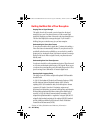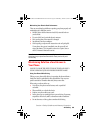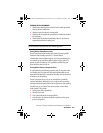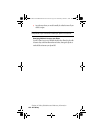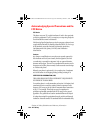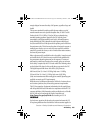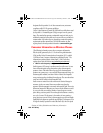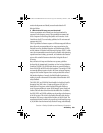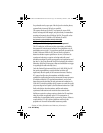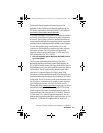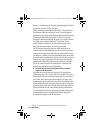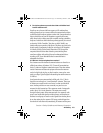
Section 4: Safety Guidelines and Warranty Information
106 4A: Safety
designated for this product. Use of other accessories may not ensure
compliance with FCC RF exposure guidelines.
*In the United States and Canada, the SAR limit for mobile phones used
by the public is 1.6 watts/kilogram (W/kg) averaged over one gram of
tissue. The standard incorporates a substantial margin of safety to give
additional protection for the public and to account for any variations in
measurements. SAR values may vary depending on national reporting
requirements and the network band. For SAR information in other
regions please look under product information at www.nokia.gov.
Consumer Information on Wireless Phones
(The following information comes from a consumer information
Web site jointly sponsored by the U.S. Food and Drug Administration
(FDA) and the Federal Communications Commission (FCC), entitled
“Cell Phone Facts: Consumer Information on Wireless Phones.” The
information reproduced herein is dated April 3, 2002. For further
updates, please visit the Web site:
http://www.fda.gov/cellphones/
.)
1. What is radio frequency energy
Radio frequency (RF) energy is another name for radio waves. It is one
form of electromagnetic energy that makes up the electromagnetic
spectrum. Some of the other forms of energy in the electromagnetic
spectrum are gamma rays, x-rays and light. Electromagnetic energy (or
electromagnetic radiation) consists of waves of electric and magnetic
energy moving together (radiating) through space. The area where these
waves are found is called an electromagnetic field.
Radio waves are created due to the movement of electrical charges in
antennas. As they are created, these waves radiate away from the
antenna. All electromagnetic waves travel at the speed of light. The major
differences between the different types of waves are the distances covered
by one cycle of the wave and the number of waves that pass a certain
point during a set time period. The wavelength is the distance covered by
one cycle of a wave. The frequency is the number of waves passing a
given point in one second. For any electromagnetic wave, the wavelength
multiplied by the frequency equals the speed of light. The frequency of an
RF signal is usually expressed in units called hertz (Hz). One Hz equals
Sprint FM OUG NO BROWSER CTIA-3a.book Page 106 Wednesday, October 9, 2002 1:42 PM



